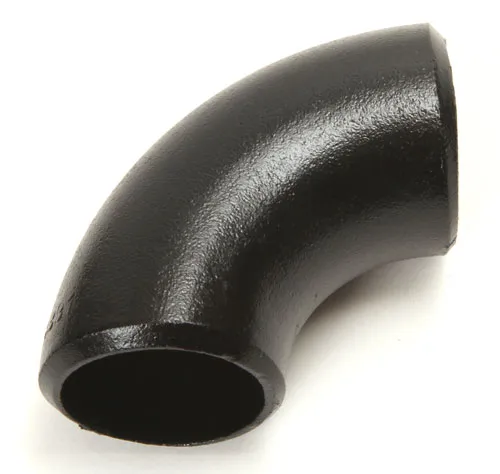-
Cangzhou Yulong Steel Co., Ltd.
-
Phone:
+86 13303177267 -
Email:
admin@ylsteelfittings.com
- English
- Arabic
- Italian
- Spanish
- Portuguese
- German
- kazakh
- Persian
- Greek
- French
- Russian
- Polish
- Thai
- Indonesian
- Vietnamese
- Zulu
- Korean
- Uzbek
- Hindi
- Serbian
- Malay
- Ukrainian
- Gujarati
- Haitian Creole
- hausa
- hawaiian
- Hebrew
- Miao
- Hungarian
- Icelandic
- igbo
- irish
- Japanese
- Javanese
- Kannada
- Khmer
- Rwandese
- Afrikaans
- Albanian
- Amharic
- Armenian
- Azerbaijani
- Basque
- Belarusian
- Bengali
- Bosnian
- Bulgarian
- Catalan
- Cebuano
- China
- China (Taiwan)
- Corsican
- Croatian
- Czech
- Danish
- Esperanto
- Estonian
- Finnish
- Frisian
- Galician
- Georgian
- Kurdish
- Kyrgyz
- Lao
- Latin
- Latvian
- Lithuanian
- Luxembourgish
- Macedonian
- Malgashi
- Malayalam
- Maltese
- Maori
- Marathi
- Mongolian
- Myanmar
- Nepali
- Norwegian
- Norwegian
- Occitan
- Pashto
- Dutch
- Punjabi
- Romanian
- Samoan
- Scottish Gaelic
- Sesotho
- Shona
- Sindhi
- Sinhala
- Slovak
- Slovenian
- Somali
- Sundanese
- Swahili
- Swedish
- Tagalog
- Tajik
- Tamil
- Tatar
- Telugu
- Turkish
- Turkmen
- Urdu
- Uighur
- Welsh
- Bantu
- Yiddish
- Yoruba

Oct . 09, 2024 00:08 Back to list
ANSI 150 Flanges Overview and Application Guide for Industrial Use
Understanding Flange Standards ANSI 150
Flanges are fundamental components in piping systems, serving as joining mechanisms for various pipes, valves, and equipment. Among the numerous standards for flanges, ANSI (American National Standards Institute) provides some of the most widely recognized specifications globally. One such standard is ANSI 150, which designates a specific pressure class for flanges. In this article, we will explore the significance of ANSI 150 flanges, their design, applications, and advantages in industrial settings.
What is ANSI 150?
ANSI 150 refers to the pressure rating of flanges conforming to ANSI/ASME B16.5 standards. Flanges labeled as ANSI 150 are designed to withstand a maximum pressure of 150 psi at ambient temperature. This rating indicates that flanges can safely handle fluid dynamic forces within a certain limit, making them suitable for various applications across different industries.
Design and Specifications
Flange design according to ANSI 150 encompasses several crucial elements. The flanges are typically made from carbon steel, stainless steel, or other materials depending on the specific requirements of the application. The dimensions of ANSI 150 flanges are standardized, ensuring compatibility with various piping systems. The flange types include weld neck, slip-on, blind, threaded, and lap joint variants.
Furthermore, ANSI 150 flanges come in different diameters (usually from ½ inch to 24 inches) and thicknesses. The thickness is crucial for maintaining integrity under pressure. For instance, a larger diameter typically requires a progressively thicker flange to bear increased loads while maintaining safety.
Applications
flange 6 ansi 150

The versatility of ANSI 150 flanges makes them suitable for numerous sectors, including oil and gas, water treatment, chemical processing, and HVAC systems. They are commonly used in piping systems where moderate pressure is present, facilitating the connection of pipes, valves, and pumps.
In oil and gas applications, ANSI 150 flanges are frequently utilized for connecting sections of pipe, as they can withstand the stresses involved in the transportation of liquids and gases. In water treatment facilities, these flanges play a critical role in the construction of filtration and distribution systems. The same is true in HVAC applications, where they help connect various components of heating and cooling systems.
Advantages of ANSI 150 Flanges
One of the most significant advantages of using ANSI 150 flanges in industrial applications is their standardized design, which simplifies the installation process. The universal dimensions and specifications allow for easy interchangeability, reducing downtime during maintenance and repairs.
Additionally, the use of ANSI 150 flanges promotes safety in piping systems by ensuring that joints can withstand specified pressures without risk of failure. The robustness of materials used in ANSI 150 flanges further enhances this safety, offering reliability in critical operations.
Moreover, the manufacturing process for ANSI 150 flanges adheres to stringent industry standards, which means they undergo rigorous testing to ensure quality and durability. This assurance is vital for industries where the failure of a joint could lead to significant safety hazards or loss of resources.
Conclusion
In conclusion, ANSI 150 flanges are an essential component in the integrity and functionality of piping systems across various industries. Their standardized design, pressure rating, and material options make them a preferred choice for many applications. Understanding the specifications and advantages of ANSI 150 can aid engineers and project managers in selecting the right components for their systems, ensuring efficient and safe operation. Whether in oil and gas, water treatment, or HVAC, ANSI 150 flanges continue to be a cornerstone of industrial piping solutions.
Latest news
-
ANSI 150P SS304 SO FLANGE
NewsFeb.14,2025
-
ASTM A333GR6 STEEL PIPE
NewsJan.20,2025
-
ANSI B16.5 WELDING NECK FLANGE
NewsJan.15,2026
-
ANSI B16.5 SLIP-ON FLANGE
NewsApr.19,2024
-
SABS 1123 FLANGE
NewsJan.15,2025
-
DIN86044 PLATE FLANGE
NewsApr.19,2024
-
DIN2527 BLIND FLANGE
NewsApr.12,2024
-
JIS B2311 Butt-Welding Fittings LR/SR 45°/90° /180°Seamless/Weld
NewsApr.23,2024











